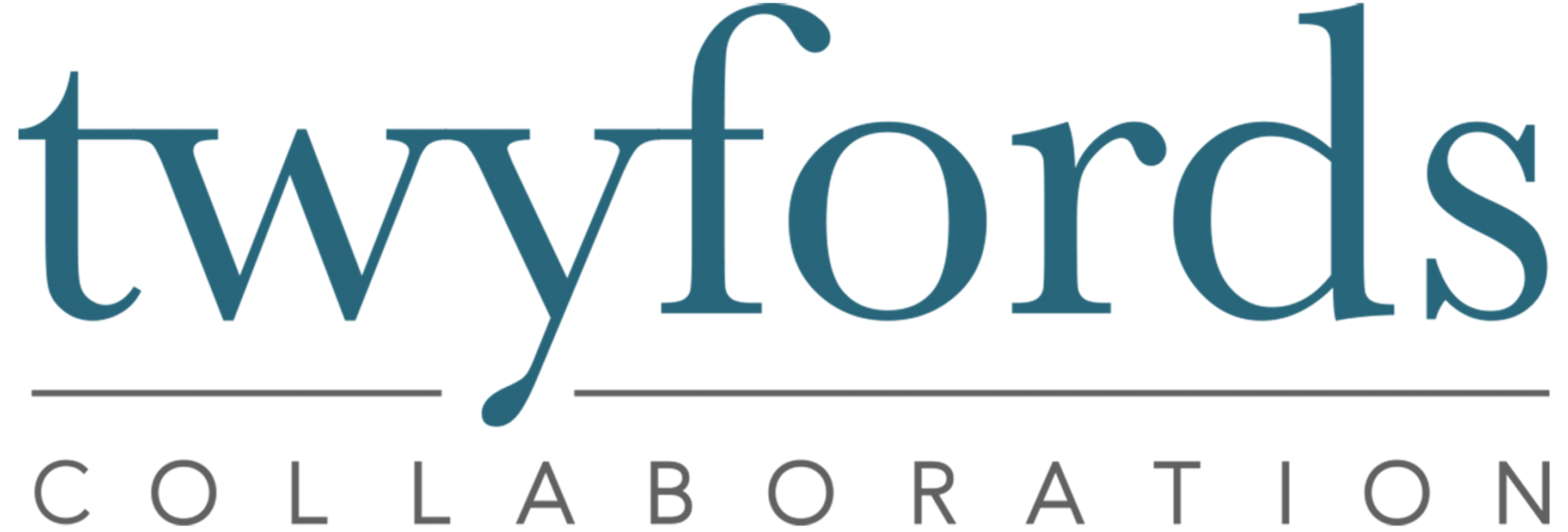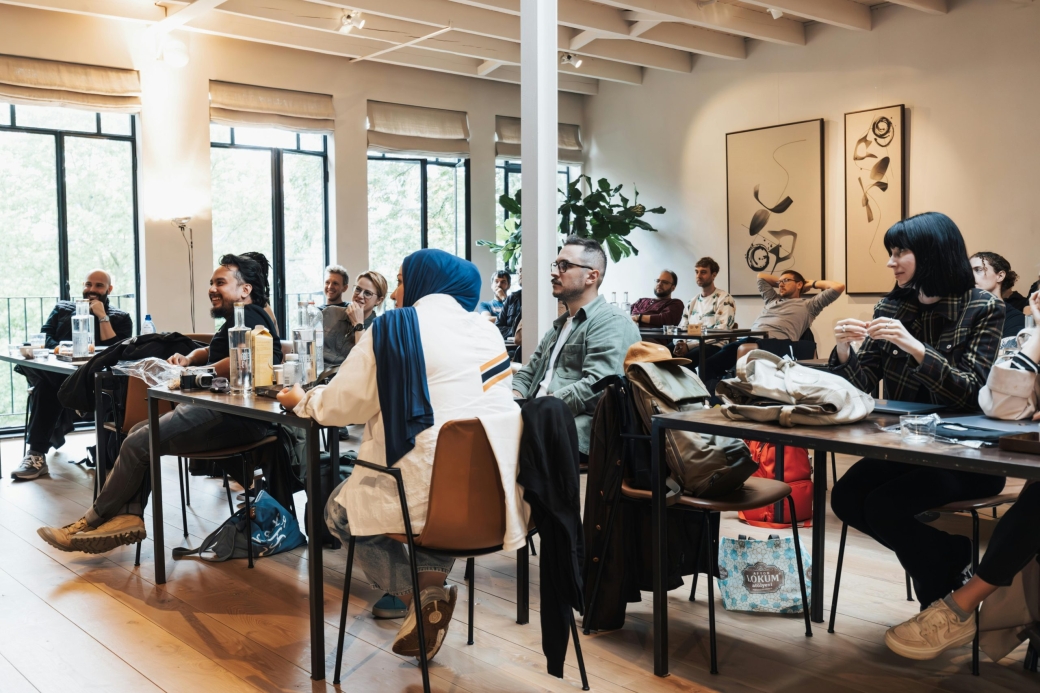Meeting the challenge of AI together
The onrushing of this thing we call AI seems to be on everyone’s minds. In this context I recently worked with a group from a local council who, among other issues, were exploring the implications of AI for the organisation, employees and the broader community. We looked into the crystal ball asking “what is the future of work?”
Of course the future of work looks very different depending our perspective. Everyone has a different take on the problems it presents. So to get the conversation started I reached for our Power of Co collaborative pathway and we began to co-define the ‘future of work’ dilemma.
I encouraged the group to first share their interests and values around this set of issues. What is important to us? As always, the responses were informative, revealing some concerns, fears and aspirations, including:
- Job security
- Fair pay for all
- People and the impact on them
- Ensuring we can be trusted by the community
- Keenness to explore how to use AI for better outcomes
- Readiness for change.
Having shared something of our interests and values, participants then were asked to describe what they thought the future of work dilemma is. Responses included:
- How do we become better educated in AI so we can understand its likely impact?
- How can we support staff in a complex and rapidly changing world?
- How do we embrace the future of work while balancing job security for workers?
- How will we deliver services and interact with customers?
- How do we ensure we have the workforce we will need?
- How do we keep the community at the centre of our decision-making?
And so-on. Everyone in the room had a slightly different take on the problem, which is very typical of any complex issue. And as diverse and multi-faceted as the future of work dilemma is, the potential solutions are perhaps even more so.
Sounds like a perfect context for more collaboration to clarify the dilemma further, to co-design the solution-finding process, to co-create and test some ideas and to scale them up together.
While meeting the challenge of AI in the workplace is daunting, authentic collaboration can bring some real biological intelligence to the task. With collaboration, my money is on the latter.
Are you finding fingerprints on your collaboration?
To help people collaborate on hard problems my 'Bible' is the Power of Co collaborative pathway. Among other things it suggests that authentic collaboration requires that people get their fingerprints on the process. This means working together to design the collaborative process including governance and decision-making. Without co-designing this we risk doing collaboration 'to' our stakeholders rather than 'with' them.
How do we co-design? Here are three examples from my own practice.
Co-designing a working group
When working with community members on a difficult policy problem we struggled to apply a set of criteria to a number of potential options. It was difficult, taxing work but I wanted people to own the decisions so I pushed them hard. After struggling for the evening someone piped up and said "This is too hard. I think we need a working group to take this forward" at which point I celebrated discretely. I had wanted this approach but felt it important not to impose the process on the affected community. But with this widely supported suggestion the community had made a great call on process. Right then and there I called for nominations and before the night was over we had ourselves a working group that everyone owned and that proved essential over many months of hard work. Because the community's fingerprints were on the process they had more trust in the outcomes.
Managing an angry meeting
I was asked by a local government client to facilitate a public meeting focussed on a contentious urban development proposal. Everyone knew there would be fireworks and Council was looking to me to somehow stop people being angry at them. Having never discovered that magic trick I did the next best thing and asked for contact details for some key community leaders and activists. I rang them and introduced myself and explained my dilemma as the facilitator of next week's meeting, i.e. I expected people to be passionate and at the same time I wanted to ensure the meeting was as useful as possible for everyone. I asked for their advice on the agenda and how best to manage the meeting. We talked it over and I got some helpful suggestions. When the meeting kicked off I was able to publicly thank people for their input and advice and with the agenda I was able to demonstrate that I had listened, that they had in fact help me design the session. Importantly this reduced the sense that I was there to 'control the crowd' and it definitely helped us have a more useful meeting.
Getting out of the steamroller
I was asked by a government client to help design and run a collaborative workshop where departmental staff wanted to work with two organisations who had received grant funding. The aim was to work together to polish their project plans and evaluation frameworks. Seemed like a great bit of collaboration. Then in the interest of co-designing the session I set up a couple of meetings with the two recipient organisations to get their input on the day. As it turns out, in both cases the very thought of "another workshop!" was anathema. Logistically it was very challenging for them both and they felt unclear about why it was necessary. With that strong feedback we were then able to redesign the approach so that the workshops weren't needed. Had we not invited them in to the co-design question, the department, with the best collaborative intention, might have 'invited' them to a workshop in a way that risked them feeling like being run over by the collaboration steam roller. With co-design we got a great process that suited everyone.
Three stories of co-design, each quite different. The key is to ensure their fingerprints are on the process and to look for opportunities to make that possible. Good luck!
For much more on co-designing governance and decision-making, take a look at our book The Power of Co. The smart leader's guide to collaborative governance. Available on Kindle.
Five top tips from our Fabulous Facilitators
I’m excited to share the top tips from participants in our recently-completed Fabulous Facilitation program. If you run meetings at work or spend time in front of the room running workshops, these tips came from people just like you.
From May through to July an enthusiastic group of people from across Australia came together for an hour a week as part of our Fabulous Facilitation program to learn and reflect on aspects of meeting and workshop leadership. In our first session they shared their facilitation challenges, which included things like:
- How to manage online and hybrid sessions in a way that keeps people engaged (no more blank screens and subtle sounds of typing in the background)?
- How to deal with power dynamics, when some people in the meeting have more power and ‘voice’ than others?
- How to deal with emotion in the room?
- How to ensure we get to outcomes in our meetings?
Sound familiar? I’ve certainly grappled with each of these in my time.
Having co-designed our learning program in session one, over the remaining sessions we explored these and other issues using frameworks that I have found useful. We also drew heavily on the experience of participants, who had lots of insights to share.
At the end of our six-week program these fabulous facilitators shared their top tips and takeaways. These five resonated strongly with me:
- When planning a meeting, consider relational as well as rational objectives. In other words, think about how you want people to feel as well as what outcome you are seeking.
- Design your sessions with participants. Seek to get their fingerprints on the process, the agenda and desired outcomes. This often means co-design conversations in the lead-up to your meeting.
- In on-line meetings liberal use of breakout rooms, whiteboards, polls and other tools can keep people actively engaged. Music helps too. As a bonus, these processes help to manage power differentials by democratising inputs.
- Emotion in meetings is ok and often constructive. Denying participants the right to bring their emotional selves to difficult conversations can make disengagement and distrust more likely.
- As a meeting leader/facilitator it’s ok to have an opinion and even to express it, as long as you stay curious about other opinions and other perspectives and model that curiosity and open-mindedness.
There you have it. Five hot tips from our fabulous facilitators. If you’d like to know more about what it takes to run meetings and workshops please be in touch. And if you would like to participate in a future program you can register your interest here.
The facilitator's art of managing time
For 48 years Ruth Belville gave London the time.
From the late 1800s right up until the 2nd World War she traveled weekly to the Royal Observatory at Greenwich, London. At the observatory, while having a cup of tea with the porter, her prized 1794 Arnold Pocket Chronometer would be adjusted against the then gold standard astronomical measurement of time, and certified as accurate to one tenth of a second.
Ms Belville would then travel back to town and visit her clients - clockmakers and other businesses - who purchased from her the accurate time. She inherited this role from her mother, who took over from her own husband upon his death. Together, the Belvilles gave London the time for over 100 years.
Time and the art of facilitation
This story is a roundabout way of reflecting on the role of the facilitator in managing that most precious of resources - time. In some ways the greatest gift we can give a group of people working together on something difficult is the gift of time. But time is always constrained and there are always so many outcomes to deliver. As facilitators we seek to balance these competing forces. Not always easy to do, but I’ve learned a few things about time management.
A quick Google delivers lots of guidance, such as this bit of advice about "extreme buffers". I might phrase that differently but I don't disagree with the sentiment. Yet there is so much more to time management than this.
In our upcoming training program Fabulous Facilitation I will be looking at this and other facilitation challenges. So if you:
- Lead meetings, workshops or other groups
- Want to broaden your thinking about facilitation and expand your skillset
- Enjoy learning with a diverse and fascinating group of peers
- Are keen to learn from all the mistakes I've made and lessons I've learned as a facilitator
...This program will be relevant to you. I hope to see you online and I promise I will do my best to give us all the time we need to learn together. I can’t promise to be accurate to one tenth of a second.
Am I Getting My Ducks in a Row, or Collaborating?
When we are worried about how our stakeholders will react, the urge to get the ducks in a row can become irresistible. But of course the more we try to manage out risks before talking to our stakeholders, the more it can look like we are doing this project to them, rather than with them. And anger grows. We are giving energy to the very thing we seek to avoid.
This dynamic can be quite paralysing.
How do you recognise when you are lining up the ducks, rather than engaging authentically? Can you see yourself here?
I am lining up my ducks when I seek… |
When authentic collaboration requires… |
| Complete clarity and agreement as well as sign-off on structure, process, rules, governance .... | Stepping into messiness
Early conversations, before we know what this is about or how we will work together on it Adequate agreement initially on the problem or the way forward |
| Really clear and agreed objectives, goals, measures and milestones | Building a shared understanding of the problem or situation and the desired destination
A willingness to take the next step despite not knowing Ongoing reflection on what is and isn’t working |
| Control of both the process and outcome | Making decisions together (doing ‘with’ not ‘to’) to grow commitment and ownership
Learning together by doing together Shared accountability and agency through co-define, co-design and co-creation |
| A plan to manage difficult relationships and diverse opinions | Exploring and investing in relationships and trust among collaborators
Listening to, acknowledging and valuing the diversity of views |
| Approvals and sign-offs by the powers that be | The courage to try something new together
Tacit agreement from the boss to proceed |
| To put off getting started until I’m more confident | Acknowledging that uncertainty is unavoidable and the right time to start is right now |
| To manage out all the risks | Living with some uncertainty and risk. Putting them on the table and managing them together |
Perhaps rather than get our ducks in a row we can find ways to let them go where they will, showing us the way to more authentic collaboration.
Three things I've learned about commitment to collaborate
I was recently at a wedding and as always enjoyed that critical moment when the bride and groom say “I do”, each making a public commitment to their lifelong partnership.
And of course, this reminded me of the commitment required to collaborate authentically
Commitment to collaborate is one of the five elements of our Power of Co collaborative pathway. In the original version of the Power of Co it is step number one.

In our later iteration, Commitment to Collaborate lies at the centre of the cycle.

However we want to illustrate it, there is no doubt that the commitment to work together, much like the commitment to a marriage, is a critical success factor of any authentic collaboration. I’ve been thinking about it a bit lately and want to share a couple of things I’ve learned about commitment to collaborate.
Who needs to commit to collaborate?
In the ideal universe, everyone is up for this collaboration thing. But of course we can’t click our fingers and make people commit. In reality there is only one person whose commitment we have control over, and that is ourselves. So this is a great place to start. Who needs to be committed to this collaboration? We do. If we believe in this and really want to bring people in to help us make decisions, we stand a good chance of success. With our collaborative mindset we are likely to act collaboratively, and it’s hard to go wrong from there. Furthermore, our authentic collaboration will help others to make their own commitment.
Bottom line? Are you committed to collaboration and how is this driving your collaborative actions?
How much commitment is enough?
I used to believe that successful collaboration required everyone to be fully committed from the get-go but over time I’ve come to see it differently. In my experience it’s unrealistic to think that all parties, whether external or internal stakeholders and decision-makers, will simply sign up to this new way of working together. I’ve learned that commitment isn’t all or nothing and that it grows over time. In practice this means I now worry less about getting strong commitment from everyone at the outset. Instead I seek to get into doing collaboration as quickly and usefully as I can, confident in the knowledge that success breeds success. The experience of good collaboration builds everyone’s confidence in the process and each other and our collective commitment grows.
Bottom line? Build commitment by doing collaboration, rather than expecting everyone to be enthusiastic supporters at the outset.
When should we be focussed on commitment to collaborate?
The answer to this lies in our evolution of the Power of Co, from a linear framework with commitment at the start to a more cyclic framework with commitment at the heart. The difference reflects our realisation that we should always be seeking to build everyone’s investment in and commitment to working together. In other words, at every step in our journey it is useful to ask ourselves “how can we do this in a way that strengthens our collective commitment to this process”.
Bottom line?: Keep asking the question – how do we strengthen our commitment to this process today?”
Embarking on a collaborative process is not like getting married, but it does require a commitment to work together. And like a marriage, it helps to re-commit every day. How committed are you?
How I survived my angriest public meeting
So there I was, in front of the stage, microphone in hand in a village community hall, attempting to manage the angriest public meeting I’ve ever been involved in. Everyone knew it would be angry, including the local media who were there with TV cameras to capture every juicy moment.
But being a clever facilitator I had planned ahead and had my strategies in place for managing just such a situation. The first one was to give everyone an opportunity to express what was on their mind. So…
“On your seats you found post it notes and a pen. To get us started you might like to write down your key issues and post them on the wall here, to capture your concerns…”
The reactions ranged from unpleasant to unprintable and it was very clear that they were going to do no such thing.
Smiling nervously at the camera in my face I soldiered on. Not to worry. Plan B then.
“Let’s go straight to the presentation then, to show you what works are being planned for the local road…..”
More abuse and invitations to stick things in uncomfortable places.
Camera man leaps up again. He’s loving it. Pans across angry crowd. Swivels and tightens on my increasingly sweaty visage. “What’s this bloke gonna do now” he’s thinking…. As was I. In that moment, I had no Plan C.
So I went rogue.
“Ok, so what would you like to do? What feels most useful to you?”
It turns out that their local community committee had their own presentation to give and nothing was going to happen until it had been shared with the room. Up they came with USB stick and the meeting was theirs for the next 30 minutes.
And after that my client was able to share their presentation and we got into Q&As and discussion. And so on.
Those moments are the teaching moments aren’t they. As I drove home, a shaken shadow of my former self, I was able to reflect on what had happened and how I had managed to survive and get a discussion going. Three things I learned in that baptism of fire:
- Letting go of control, sharing how things should proceed. It feels terrifying but was in reality the thing that allowed us to make progress together.
- The more I tried to manage out the anger I was expecting and seeing, the more I exacerbated it. I was the problem.
- Being vulnerable, unsure and uncertain of how to proceed was not the end of the world. In fact, it allowed the meeting to take its own more useful direction.
I learned these lessons in the context of facilitating a public meeting. But have applied them in all collaborative situations since.
Collaboration often involves or evokes high emotions and it’s human nature to try to manage them out. But by sharing control, acknowledging how people are feeling and accepting vulnerability we are much more likely to connect and collaborate as humans.
That’s what I’d say to the camera should it ever be pointed in my face again.
Overcoming the toughest silos of all
Letting them into your silo is the easy bit. Letting them into your head and heart is harder.
In my work this year supporting groups to work together I’ve seen clients working hard to break down the silos and collaborate more effectively with others. I’ve been struck by the commitment shown by many to changing the way they work together. I’ve also been struck by some of the challenges.
Collaborating authentically and creatively with others means being vulnerable, and this is part of the challenge of working across silos. To genuinely let them in to my dilemmas and aspirations I have to let them into:
My head – so they can understand my thinking.
My team – so they can be a part of us, even if they don’t seem to fit.
My work plan - because we are doing this together.
My budget – if are working together on this then my budget is theirs.
My mistakes and uncertainties – because if I can’t be open and honest with them about what I know and don’t know, we aren’t really collaborating.
Silos are organisational but they are also emotional. Getting into the room together across your silos is necessary. Letting them into your head and heart is the thing that makes the difference. The good news is that you can take small steps, take some small risks while staying safe. You don't have to bare all in order to build your confidence to work together.
And best of all, you can get started today. Just try it!
Three simple steps to better collaboration across silos
“I’ll be blunt, the biggest barrier to Australia having the convenience of seamless government services is what I refer to as a plague of fiefdoms. The siloed thinking across departments and agencies has to stop.”
Said Minister Bill Shorten in a recent address at the National Press Club.
And he is not the only one to point out the downside of silos and what he called “turf protection”. We see it in all large organisations and between any organisation and their stakeholders.
Of course, some organisational structure is essential. Silos are useful. But silos often become those fiefdoms the Minister was decrying, getting in the way of effective delivery.
I’ve done a lot of work this year with teams from State Government finding it difficult to make their silos disappear so they can work as a single team and learn from each other.
Here are some things I’ve learned about how to make your silos work a little better.
Get together as often as you can
There is no substitute for getting into the room together – physically where possible, virtually where you must. Get together across your silos. Sit beside ‘them’ and talk to them. Look at the issues together.
Walk in each other’s shoes
Share your perspectives, your dilemmas, your aspirations. Talk to each other. Most importantly, listen to each other.
Just try stuff
Agree on few small steps you can take together to bridge the gaps between you. Experiment with your processes. Learn your way beyond the silos together as you do the work.
Sounds simple. Is simple. Takes commitment. By coming together, walking in each other’s shoes and experimenting with new ways to do things, you can work together better, whatever the state of your silos.
Less Planning, More Collaborating
Sometimes we can get a little paralysed by our urge to plan. I was recently working with a group responsible for coordinating works in partnership with others across a diverse and complex system. The client has a fabulous knack for creating “Playbooks” for action, describing in detail the approach for a range of tasks and projects. They are good planners and they do this important work well.
Detailed plans are invaluable when there is certainty around what needs doing and how it needs to be done. But I was invited to help them collaborate and in this realm there is less clarity and little certainty.
As I often do, I threw up a slide at one point listing some characteristics of a collaborative mindset. The one that seemed to jump out for my client was Less plan. More act. It sparked a discussion about what this means.
When thinking about how to collaborate with others it can be tempting to invest lots of time and energy in creating the collaboration plan. Yet while planning is good, I like to say that we can talk about talking to stakeholders, or we can talk to them. In other words, we can plan to engage or we can engage and when asked, I always encourage the latter.
Less planning, more doing. Less thinking about how to collaborate, and more getting started tomorrow. If you are uncertain how and why and what, then those are some good questions to get started with.
Of course, getting started when you don't have a clear and detailed playbook can be a little unsettling. This is why I get to this discussion in the context of the mindset. Doing things differently requires us to think differently. Authentic collaboration requires us to think more like collaborators and less like traditional project managers.
Are you thinking like a collaborator?
If you want to check the state of your collaborative mindset, take a look at our simple assessment tool.










